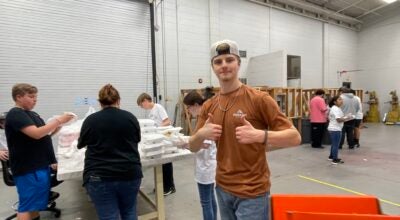How to handle the different pine beetles you may have
Published 4:05 pm Friday, December 16, 2016
By Ty Torrance
I think it is safe to say we are all thankful for the rain we have received recently, but the extended period of hot dry weather has taken a toll on agriculture. The largest crops impacted were probably winter grazing and small grains, but also pine trees. The drought had a significant impact on our pine trees, both urban and rural. Extended periods of hot dry weather can bring significant stress to pine trees making them more susceptible to pest. One group of pest that we have noticed in particular are Pine Beetles.
There are three main species of pine beetles that attack trees in Georgia: Southern Pine Beetle, Ips Beetle, and Black Turpentine Beetle. The most destructive pine beetle is the Southern Pine Beetle. SPB will attack multiple pine species, but one of their preferred host is the loblolly pine. As a general rule, pine beetles do not attack healthy vigorously growing trees. Beetles tend to find a weak target like a tree that has physical injuries, or is stressed and slow growing. Many times, the owner is not aware of the problem until the needles are brown and the bark is falling off. At this point, little or nothing can be done. Control options are limited for beetle control but correct beetle identification is critical.
Southern Pine Beetle: As the southern pine beetle feeds under the bark of the tree it will form pitch tubes that are visible from the surface. The tubes are usually white in color, located between the crevices of bark plates about the size of a pencil eraser.
If you peal back the bark layer, the feeding galleries can be revealed. The feeding galleries of the southern pine beetle are in a winding “S” shaped pattern. The southern beetle itself is very small like the Ips beetle, but can be differentiated by the lack of spines on the hind end.
Ips Beetle: Ips Beetles are similar in size to the southern pine beetles, but can be identified by the presence of spines on the hind end. Ips beetle pitch tubes are usually on the bark surface in the middle of large bark plates, not in the crevices like those of the SPB. Ips beetle pitch tubes usually have more of a pink tint compared to the white pitch of SPB. The galleries made by Ips Beetles have a linear “Y” or “H” shaped pattern.
Black Turpentine Beetle: The Black Turpentine Beetle is probably the least destructive of the beetles mentioned. In fact, many of the trees infected by this beetle survive the attack without any assistance. The turpentine beetle is the largest of the three beetles and its damage is usually confined to the bottom 10-15 ft. of the tree. The galleries formed by the turpentine beetle are significantly different because they can be up to an inch wide and in a downward fan shaped pattern.
Control: As I mentioned before, the Black Turpentine Beetle is the least destructive, so naturally it is the only beetle that can be effectively controlled with an insecticide. The spray can be applied to the trunks of the infected trees and neighboring trees up to 10 ft. However, trees infected with Southern Pine Beetles or Ips Beetles will not be helped by insecticide applications. Unfortunately, our only option is to remove the infected trees and destroy the material.
If the tree is cut and left in place, beetles can continue to feed and reproduce in it for a period of time.
Please contact the office with any questions you may have on this topic or any others. (229) 248-3033.




